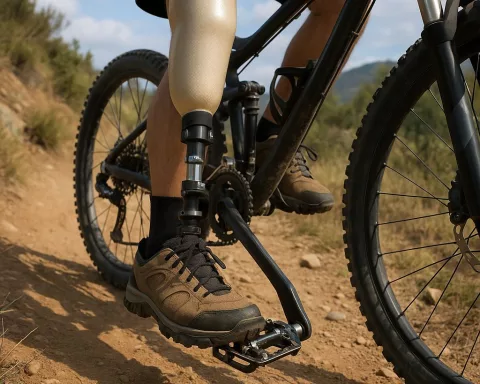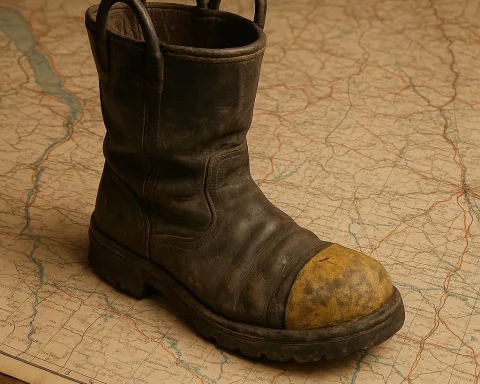E-hailing services like Uber offer quick rides but come with serious safety worries. Incidents of driver misconduct and lack of accountability show how vulnerable passengers can be. Stories from Cape Town highlight these issues, with examples of drivers threatening passengers or stealing belongings, revealing the urgent need for better safety measures and communication. As these services grow in cities, tech companies must prioritize user safety and cultural understanding to ensure everyone feels secure and respected during their rides. Balancing convenience with responsibility is key for a safer future in the digital age.
What are the safety concerns associated with e-hailing services?
E-hailing services, such as Uber, face significant safety concerns including driver misconduct, lack of accountability, and potential harm to passengers. Notable incidents highlight vulnerabilities, emphasizing the need for robust safety measures, effective communication, and cultural sensitivity training to protect users and enhance their experience.
The Rise of E-Hailing Services in Urban Landscapes
In today’s fast-paced digital world, e-hailing platforms like Uber have emerged as crucial components of urban living, offering convenience and efficiency in bustling city environments. These services initially captivated the public with their promise to revolutionize transportation, providing an alternative to traditional modes of travel. Yet, as these platforms have become embedded in daily life, they have also become arenas for stories that expose the intricate balance between technological advancement and user safety.
As these narratives unfold, they spotlight the pressing responsibilities shouldered by tech companies in ensuring the safety and security of their patrons. This concern takes on added weight in the context of incidents that highlight the potential for harm within these interactions, revealing the darker undercurrents that accompany such digital conveniences.
Personal Safety in the Age of Technology: A Case Study from Cape Town
In the vibrant cityscape of Cape Town, media figure Anele Mdoda experienced an unsettling ride that encapsulates the tension between technology and personal security. Her journey began with the simple choice of selecting a “no talking” option for a quieter trip, a feature designed to enhance passenger comfort. However, this decision allegedly provoked an aggressive response from her driver, culminating in a threat of sexual violence. This alarming encounter serves as a stark reminder of how swiftly a sense of protection can falter, raising concerns about the vulnerabilities inherent in these services.
Mdoda’s experience is not an isolated one, as illustrated by another incident involving a Cape Town public relations executive known online as @kamvag_. During his ride, a seemingly routine trip took a distressing turn when he accused the driver of stealing his laptop bag, which contained critical documents like his passport. The driver reportedly canceled the journey after taking possession of the bag, leaving @kamvag_ in a state of anxiety and frustration. His attempts to seek resolution from the e-hailing service were met with automated replies, highlighting a familiar frustration in the digital age.
The situation reached a resolution when his belongings were returned, but not without a catch—@kamvag_ had to pay a fee, suggesting an element of extortion in the transaction. This development underscores the complex challenges faced by technology companies in governing conduct and ensuring accountability across a diverse network of drivers.
Addressing Broader Societal Issues: Safety and Cultural Sensitivity
Mdoda’s ordeal delves into deeper societal issues, shedding light on the pervasive threat of gender-based violence and the specific risks women encounter, even while using services intended to enhance safety and convenience. The driver’s alleged remark—”In my country, we would rape you to teach you a lesson”—not only underscores cultural disparities but also highlights the urgent need for robust safety systems to protect passengers.
Historically, significant movements like the Renaissance reflected profound societal transformations, advocating humanism and a revival of classical thought. Today, companies like Uber find themselves at a similar juncture, where the push for innovation must align with the ethical imperative to safeguard individual rights. Achieving this balance is essential as urban areas increasingly lean on digital solutions for everyday needs.
This challenge necessitates a commitment to ensuring that technological progress enhances, rather than jeopardizes, user safety. It involves not only implementing stringent safety measures but also promoting a culture of empathy and respect among service providers and users alike. In an era where personal narratives quickly gain traction on social media platforms such as X, formerly Twitter, public perception plays a crucial role in shaping the future of these services.
The Imperative of Accountability and Cultural Understanding
The experiences of Mdoda and @kamvag_ invite reflection on the importance of accountability within the digital domain. They urge tech companies to prioritize user safety with the same intensity as they pursue market expansion. This priority demands the development of more effective communication and resolution mechanisms, ensuring that automated responses do not replace the essential human connection and understanding.
Moreover, these incidents serve as a poignant reminder that while technology can bridge geographical divides, the human element remains indispensable. Both drivers and passengers bring their cultural contexts into these interactions, which may sometimes result in conflict. Training programs emphasizing cultural sensitivity and conflict resolution could play a vital role in mitigating such incidents, fostering a safer and more inclusive environment for all participants.
The Path Forward: Ensuring Safety and Ethical Responsibility
In the broader context of e-hailing services, maintaining the delicate balance between convenience and security is paramount. Uber, along with its peers, must navigate these waters with diligence and care, fully aware that each ride carries the inherent obligation of ensuring passenger well-being. This responsibility extends beyond immediate safety concerns to encompass the broader societal implications of their operations.
Both anecdotal and analytical, the stories from Cape Town underscore the necessity for ongoing discourse between tech companies, their users, and regulatory bodies. By listening to and learning from these experiences, the industry can evolve into a more responsive, humane ecosystem that values technological progress and the protection of human dignity equally.
In conclusion, as e-hailing services continue to integrate into the fabric of urban life, the imperative for these platforms to prioritize safety and ethical responsibility grows increasingly urgent. Balancing innovation with accountability is not merely an option but a necessity that will define the future landscape of digital services in our interconnected world.
FAQ: Navigating the Digital Era of E-Hailing Services
What are the main safety concerns associated with e-hailing services?
E-hailing services, such as Uber, face significant safety concerns including driver misconduct, lack of accountability, and potential harm to passengers. Reports of incidents where drivers threaten or steal from passengers highlight the urgent need for improved safety measures and effective communication.
How do incidents in urban areas, like Cape Town, illustrate these safety issues?
Incidents in Cape Town, including a media figure experiencing threats during a ride and another passenger having his belongings stolen, highlight the vulnerabilities that passengers face. These stories reveal the necessity for e-hailing services to enhance safety protocols and ensure accountability among drivers.
What role does cultural sensitivity play in passenger safety?
Cultural sensitivity is crucial in e-hailing services as it can help mitigate misunderstandings and conflicts between drivers and passengers. Training programs that emphasize cultural awareness and conflict resolution could foster a safer and more respectful environment for all users.
How should e-hailing services improve their accountability measures?
E-hailing services must prioritize user safety by developing effective communication and resolution mechanisms. This includes ensuring that automated responses do not replace human connection and understanding when addressing passenger concerns or complaints.
Why is the balance between convenience and safety important in e-hailing services?
As e-hailing services become integral to urban life, the balance between convenience and safety is vital. Tech companies must navigate this responsibility carefully, ensuring that passenger well-being is a priority alongside market expansion and technological innovation.
What steps can tech companies take to enhance user safety?
Tech companies can enhance user safety by implementing stringent safety measures, promoting cultural understanding among drivers, and creating responsive mechanisms for addressing passenger complaints. Continuous dialogue with users and regulatory bodies is essential for evolving practices that prioritize both safety and ethical responsibility.












